-
-
Accédez au logiciel étudiant gratuit
Ansys donne les moyens à la prochaine génération d'ingénieurs
Les étudiants ont accès gratuitement à un logiciel de simulation de classe mondiale.
-
Connectez-vous avec Ansys maintenant !
Concevez votre avenir
Connectez-vous à Ansys pour découvrir comment la simulation peut alimenter votre prochaine percée.
Pays et régions
Espace client
Support
Communautés partenaires
Contacter le service commercial
Pour les États-Unis et le Canada
S'inscrire
Essais gratuits
Produits & Services
Apprendre
À propos d'Ansys
Back
Produits & Services
Back
Apprendre
Ansys donne les moyens à la prochaine génération d'ingénieurs
Les étudiants ont accès gratuitement à un logiciel de simulation de classe mondiale.
Back
À propos d'Ansys
Concevez votre avenir
Connectez-vous à Ansys pour découvrir comment la simulation peut alimenter votre prochaine percée.
Espace client
Support
Communautés partenaires
Contacter le service commercial
Pour les États-Unis et le Canada
S'inscrire
Essais gratuits
ANSYS ADVANTAGE MAGAZINE
DATE: 2020
Ansys Hall of Fame Winners
By Ansys Advantage Staff
Baseball players have Cooperstown, rock-and-roll stars have Cleveland and — for the last 11 years — engineers have had the annual Ansys Hall of Fame competition. The contest showcases how engineers are using Ansys simulation solutions.
The Hall of Fame grew significantly in 2020, with a 21% increase in total submissions compared to 2019. The submissions, which were sent from nearly 20 countries, were divided into corporate and academic categories. Corporate winners included companies that used simulation to lower costs, reduce emissions, prevent damage and save time in fields as varied as asphalt equipment, electromagnetics and turbomachinery. Academic winners used simulation to detect unexploded landmines, and better understand actual and artificial hearts.
CORPORATE WINNERS

ASTEC, INC. engineers identified an opportunity to optimize an asphalt drying process in which the phase change of liquid to gas can consume half the energy input. By developing software to capture the mass transfer between aggregate particles and using Ansys to solve exchanges between the fluid phase, the team designed a more efficient dryer that lowers running costs and reduces emissions.
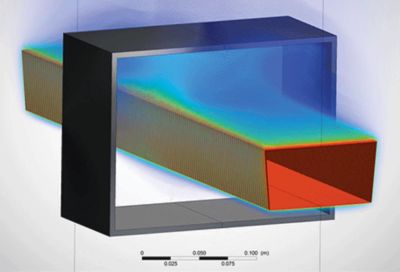
DRUIDS PROCESS TECHNOLOGY S.L. developed an electromagnetic detector to sense internal cavities that can block production in high-temperature copper. Engineers used Ansys solutions to check the coil configuration and induce currents, monitor the detector’s behavior at extreme heat, and determine whether thermal and pressure effects could damage the coil shield.
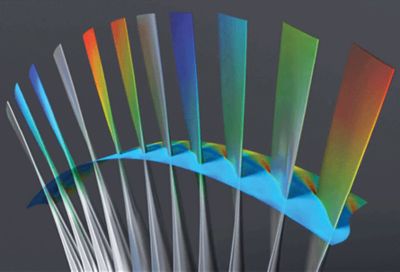
NUM solution created its own flutter tool for automatic blade flutter prediction with Ansys simulations, leading to a 60% reduction in simulation time and a 95% reduction in pre- and post-processing time. The solution is being used to accelerate the development of a flutter-free blade, which will reduce blade loss and damage in large-scale turbomachinery.
ACADEMIC WINNERS
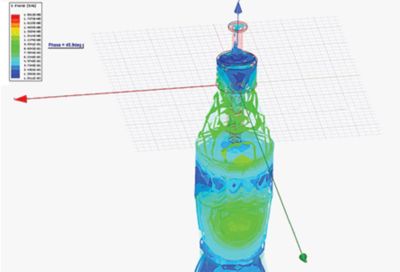
King Abdullah University of Science and Technology used Ansys to detect unexploded landmines — a massive problem in some countries — that cannot be detected with conventional radar. Researchers obtained the radar cross section of a 330-milliliter plastic bottle filled with dielectric materials to mimic explosives and applied machine learning techniques for better landmine detection.
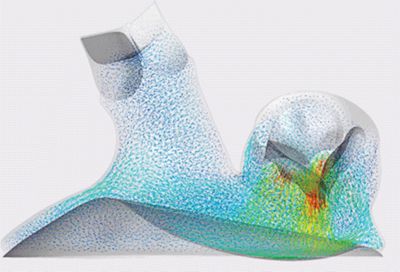
Politecnico di Milano simulated an artificial ventricle to develop a computational model that accurately reproduces the hemodynamics inside the left chamber of an artificial heart. The results from fluid–structure interaction simulations led to realistic kinematics of the valve leaflets and membrane.
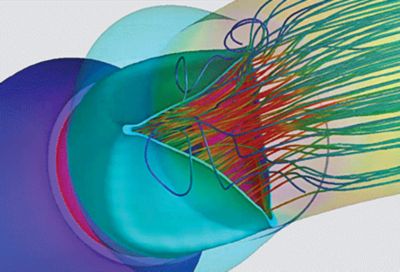
University of Rome Tor Vergata engineers used Ansys solutions to perform cardiovascular simulation with moving walls and applied it to the fluid–structure interaction analysis of a custom valve coupled with patient data. They developed a high-fidelity, fast and accurate way to bring simulation into the clinic.
Commençons
Si vous êtes confronté à des défis d'ingénierie, notre équipe est là pour vous aider. Forts de notre expérience et de notre engagement en faveur de l'innovation, nous vous invitons à nous contacter. Collaborons pour transformer vos obstacles techniques en opportunités de croissance et de réussite. Contactez-nous dès aujourd'hui pour entamer la conversation.